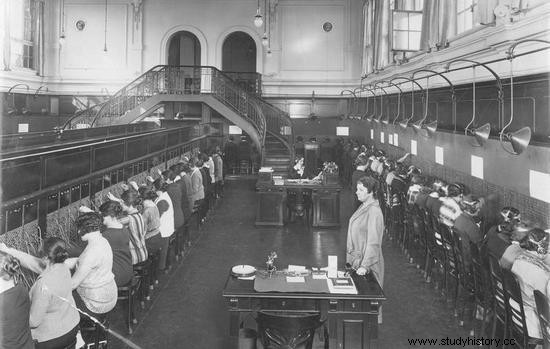Do you ever complain that phone calls are too expensive? Have you been wondering what it was like in the past? You probably all remember the beginning of the previous decade, when you had to pay even a few zlotys per minute for the pleasure of using a mobile phone. In the 1920s, landline phones were a similar novelty to mobile phones at the turn of the 20th and 21st centuries. Meanwhile, they cost ... surprisingly little!
Immediately after the First World War, there were only 2,500 telephone subscribers in Warsaw. However, four years were enough and their number increased to ... 31,000. The Warsaw telephone book swelled from year to year, and on the eve of the outbreak of World War II it had almost 600 pages. The great success of telephony was mainly due to the prices:almost anyone could afford their own phone.
Although the users of that time still complained that they were paying too much, today it is difficult to understand why they were so upset. A standard telephone subscription cost from 10 to 12 zlotys at the time (depending on the city) at the end of the 1920s and allowed to make 75 calls per month.

At the end of the years. 30. In the subscription price, as many as 75 calls could be made, the time of which was not limited. So the telephonists had their hands full.
Not the minutes - as today - were limited, but the connections. Once we got through, you could talk as much as you want. 10 pre-war zlotys is about 100 today. If we assume that one conversation took 4-5 minutes on average, it turns out that ... the phone calls were cheaper than today ! Even though they were still a technical novelty in a relatively backward country.
Let us add that in Warsaw, Polska Akcyjna Spółka Telefoniczna (Tepsy's predecessor) also offered a second, more expensive subscription. For 18 zlotys then (180 today's zlotys), the client received a package of 200 connections. What can I say, if someone liked long conversations, he was in an incomparably better situation than the users of today's phones. Even exceeding the monthly "talk quota" did not bring any dangerous consequences. Each additional connection cost 60-70 today's cents, no matter how many minutes .
Overall live do not die! The subscriber only had to be careful with the language (swearing on the line was punishable by disconnecting from the network!) And his phone (telephone books warned that improper dialing could damage the telephone and even the switchboard). And do not do without text messages and Internet access, because such additions were not offered by telephone networks at that time ...
Source:
- Kamil Janicki, Aleksandra Zaprutko, Elites in the Second Polish Republic , Dragon 2011.
